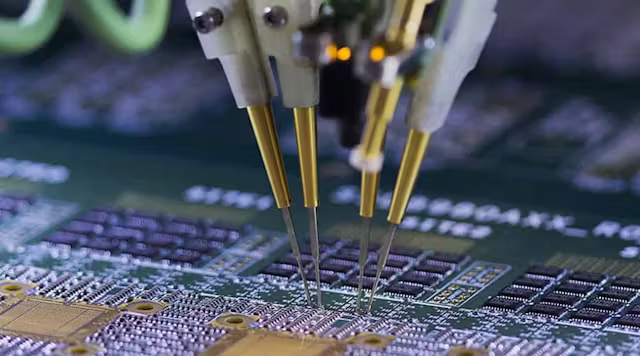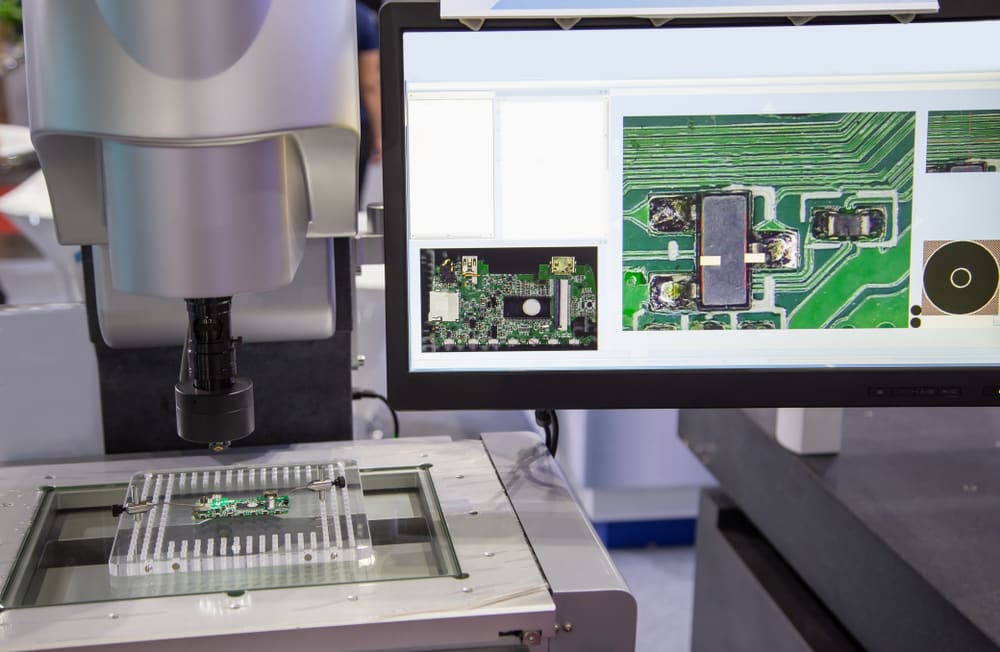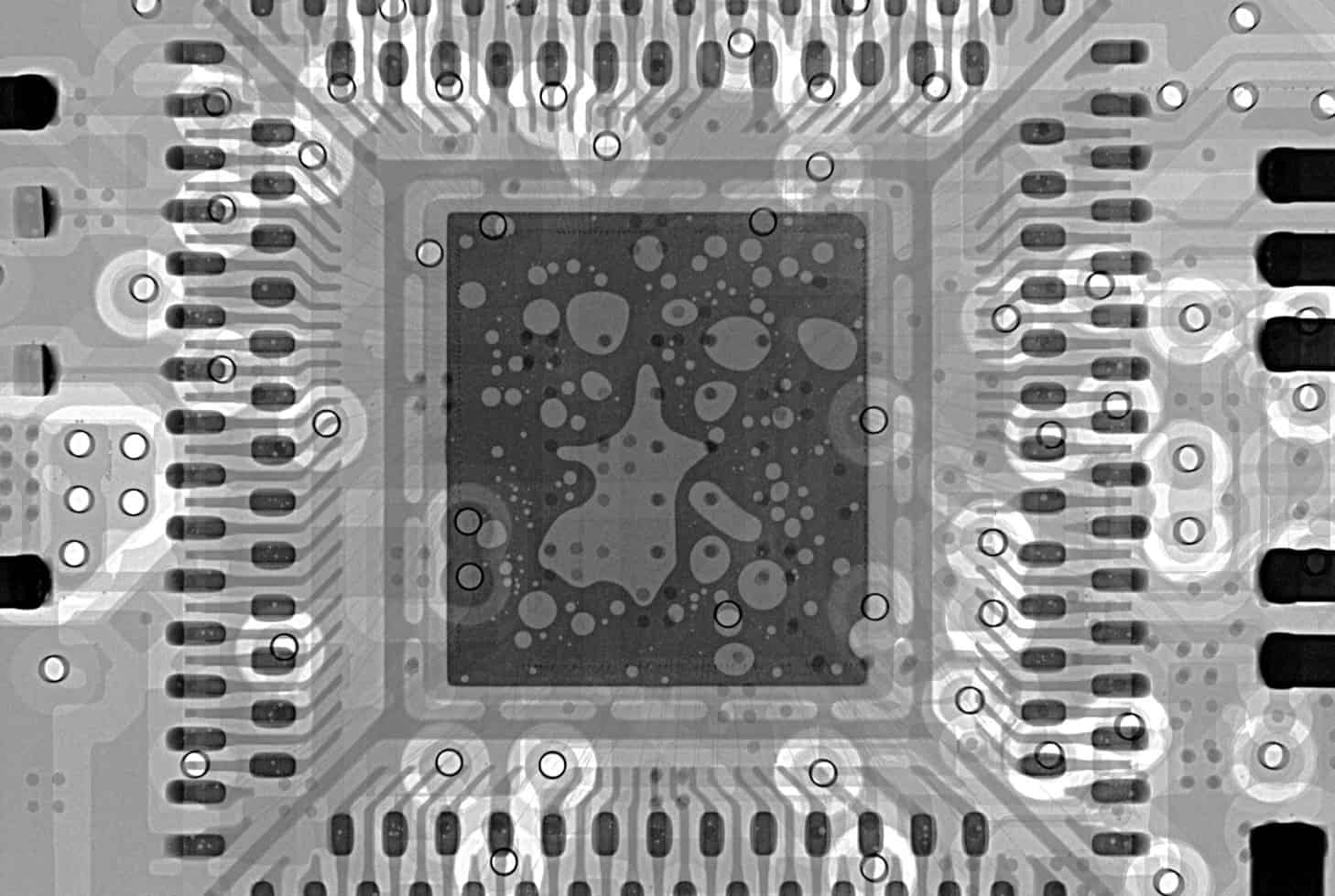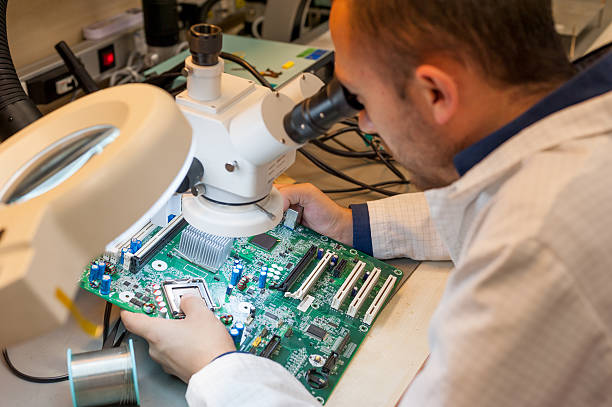When it comes to ensuring the quality and reliability of printed circuit boards (PCBs), component alignment testing is a critical step in the manufacturing process. Choosing the right equipment for this task can make the difference between a flawless product and costly defects. Whether you're looking into AOI systems for alignment, X-ray inspection of component placement, manual inspection tools, or automated alignment equipment, selecting the appropriate tools depends on your production needs, budget, and quality standards.
In this comprehensive guide, we'll dive deep into the world of component alignment testing equipment. We'll explore the different types of tools available, their benefits and limitations, and how to choose the best options for your specific requirements. Let's get started with a detailed look at why alignment testing matters and how the right tools can elevate your PCB manufacturing process.
Why Component Alignment Testing Matters in PCB Manufacturing
In PCB manufacturing, even a slight misalignment of components can lead to serious issues like short circuits, open connections, or reduced product lifespan. With components becoming smaller—often down to 01005 sizes (0.4mm x 0.2mm)—precision is more important than ever. Misalignment by just a fraction of a millimeter can cause a component to fail, impacting the entire board's functionality.
Component alignment testing equipment helps manufacturers detect and correct these issues before they escalate. By ensuring components are placed accurately on the board, these tools reduce defect rates, improve product reliability, and save time and money in rework or recalls. Now, let’s explore the main types of equipment used for alignment testing and how they fit into the production line.

Types of Component Alignment Testing Equipment
There are several categories of tools and systems designed for component alignment testing. Each offers unique advantages depending on the stage of production, the complexity of the board, and the level of automation desired. Below, we’ll cover four key types: AOI systems for alignment, X-ray inspection of component placement, manual inspection tools, and automated alignment equipment.
1. AOI Systems for Alignment: Precision Through Automation
Automated Optical Inspection (AOI) systems are among the most widely used tools for component alignment testing in modern PCB manufacturing. These systems use high-resolution cameras and advanced software to visually inspect boards for defects, including misalignment of components. AOI systems for alignment are particularly effective at detecting issues like component skew, incorrect placement, or missing parts.
AOI systems can achieve sub-pixel accuracy, often detecting deviations as small as 0.01mm. They are typically integrated into the production line at multiple stages, such as after solder paste application (SPI), pre-reflow, and post-reflow. Post-reflow inspection is especially common, as it allows manufacturers to catch a wide range of defects in a single scan.
Benefits of AOI Systems:
- High-speed inspection, capable of scanning hundreds of boards per hour.
- Non-contact method, reducing the risk of damage to delicate components.
- Programmable lighting and algorithms for detecting various defect types.
- Cost-effective for high-volume production, reducing labor costs.
Limitations:
- May struggle with hidden defects under components or in multi-layer boards.
- Requires initial setup and programming, which can be time-consuming.
For manufacturers dealing with high-volume production and surface-mount technology (SMT), AOI systems for alignment are often the go-to choice for maintaining quality control.

2. X-Ray Inspection of Component Placement: Seeing Beneath the Surface
While AOI systems excel at surface-level inspection, they can’t detect issues hidden beneath components or within multi-layer boards. This is where X-ray inspection of component placement comes into play. X-ray systems use penetrating radiation to create detailed images of a PCB’s internal structure, revealing misalignments, voids in solder joints, and other defects that are invisible to the naked eye or optical systems.
X-ray inspection is particularly valuable for complex assemblies involving Ball Grid Arrays (BGAs) or Chip-Scale Packages (CSPs), where solder joints are hidden under the component. These systems can detect misalignments with precision down to 0.001mm in some advanced setups, ensuring even the tiniest discrepancies are caught.
Benefits of X-Ray Inspection:
- Reveals hidden defects, such as misaligned solder balls under BGAs.
- Ideal for high-density and multi-layer boards.
- Provides detailed 2D and 3D imaging for thorough analysis.
Limitations:
- Expensive equipment and slower inspection speeds compared to AOI.
- Requires trained operators to interpret results accurately.
- Safety concerns due to radiation exposure, necessitating strict protocols.
For manufacturers working with intricate designs or critical applications like aerospace or medical devices, X-ray inspection of component placement is an indispensable tool for ensuring quality.

3. Manual Inspection Tools: Hands-On Precision for Small-Scale Needs
While automated systems dominate large-scale production, manual inspection tools still have a place in smaller operations or for specific troubleshooting tasks. These tools include magnifying glasses, microscopes, and precision measurement devices like calipers or gauges. Manual inspection is often used for prototype testing, low-volume production, or as a secondary check after automated inspection.
Manual inspection tools allow technicians to closely examine component placement and alignment with the naked eye or under magnification. For instance, a stereo microscope with 10x to 40x magnification can help spot misalignments or solder defects on components as small as 0402 (1.0mm x 0.5mm).
Benefits of Manual Inspection Tools:
- Low cost and easy to use for small-scale or prototype work.
- Provides a hands-on approach for detailed troubleshooting.
- No need for complex setup or programming.
Limitations:
- Time-consuming and labor-intensive, unsuitable for high-volume production.
- Prone to human error, especially during long inspection sessions.
- Limited ability to detect internal or hidden defects.
Manual inspection tools are best suited for startups, hobbyists, or as a complementary method in a mixed inspection workflow.

4. Automated Alignment Equipment: Streamlining the Entire Process
Beyond inspection, automated alignment equipment plays a crucial role in the actual placement of components during assembly. These systems, often integrated into pick-and-place machines, use vision systems and robotics to position components with extreme precision before soldering. Automated alignment equipment can achieve placement accuracy within 0.01mm, ensuring components are correctly positioned from the start.
These systems often work in tandem with AOI or X-ray inspection tools to create a closed-loop process. If misalignment is detected during inspection, feedback is sent to the alignment equipment to adjust placement parameters in real-time.
Benefits of Automated Alignment Equipment:
- Reduces misalignment errors during the initial placement stage.
- High-speed operation, ideal for large-scale production.
- Integrates with inspection systems for continuous improvement.
Limitations:
- High upfront costs for equipment and integration.
- Requires regular calibration and maintenance.
For manufacturers aiming to minimize defects from the outset, investing in automated alignment equipment is a proactive step toward quality control.
How to Choose the Right Component Alignment Testing Equipment
With so many options available, selecting the right tools for component alignment testing can feel overwhelming. Here are key factors to consider when making your decision:
1. Production Volume and Speed
If you’re running a high-volume production line, automated systems like AOI and automated alignment equipment are essential for keeping up with demand. For smaller runs or prototypes, manual inspection tools may suffice.
2. Complexity of PCB Designs
For complex, multi-layer boards or designs with hidden components like BGAs, X-ray inspection of component placement is a must. Simpler designs may only require AOI or manual inspection.
3. Budget Constraints
Automated systems and X-ray machines come with higher upfront costs but save money in the long run by reducing defects and labor. If budget is tight, start with manual inspection tools and scale up as needed.
4. Quality Standards and Industry Requirements
Industries like automotive, aerospace, and medical have strict quality standards that often require advanced inspection methods. Ensure your chosen equipment meets or exceeds these requirements.
5. Integration with Existing Systems
Look for equipment that can integrate seamlessly into your current production line. For example, AOI systems and automated alignment equipment should communicate effectively to provide real-time feedback.
By carefully evaluating these factors, you can build an inspection and alignment workflow that matches your specific needs and goals.
Best Practices for Using Component Alignment Testing Equipment
To get the most out of your investment in alignment testing tools, follow these best practices:
- Regular Calibration: Ensure all equipment, especially automated systems, is calibrated regularly to maintain accuracy. For instance, AOI systems may need recalibration after every 1,000 boards or weekly, depending on usage.
- Operator Training: Train staff to use and interpret results from complex systems like X-ray inspection machines to avoid misdiagnosis of defects.
- Layered Inspection: Combine multiple methods—such as AOI for surface defects and X-ray for internal issues—for comprehensive quality control.
- Data Analysis: Use data from inspection systems to identify recurring issues and improve upstream processes like component placement.
- Preventive Maintenance: Schedule regular maintenance for automated alignment equipment and inspection systems to prevent downtime.
Future Trends in Component Alignment Testing Equipment
The field of component alignment testing is evolving rapidly, driven by advancements in technology and the increasing complexity of PCB designs. Here are a few trends to watch:
- AI and Machine Learning: AOI systems are increasingly incorporating artificial intelligence to improve defect detection accuracy and reduce false positives.
- 3D Inspection: Both AOI and X-ray systems are moving toward 3D imaging for more detailed analysis of component placement.
- Integration and Automation: Full integration of alignment and inspection equipment into smart manufacturing systems is becoming the norm, enabling real-time adjustments and data-driven decisions.
Staying ahead of these trends can help manufacturers maintain a competitive edge in quality and efficiency.
Conclusion: Invest in the Right Tools for Quality and Efficiency
Component alignment testing equipment is a cornerstone of high-quality PCB manufacturing. Whether you opt for AOI systems for alignment, X-ray inspection of component placement, manual inspection tools, or automated alignment equipment, the right choice depends on your production scale, design complexity, and quality requirements. By understanding the strengths and limitations of each tool and following best practices, you can ensure precise component placement, minimize defects, and deliver reliable products to your customers.
At ALLPCB, we’re committed to supporting manufacturers with the resources and expertise needed to achieve excellence in PCB production. Explore our range of services and solutions to see how we can help you optimize your alignment testing processes and elevate your manufacturing capabilities.
 ALLPCB
ALLPCB







